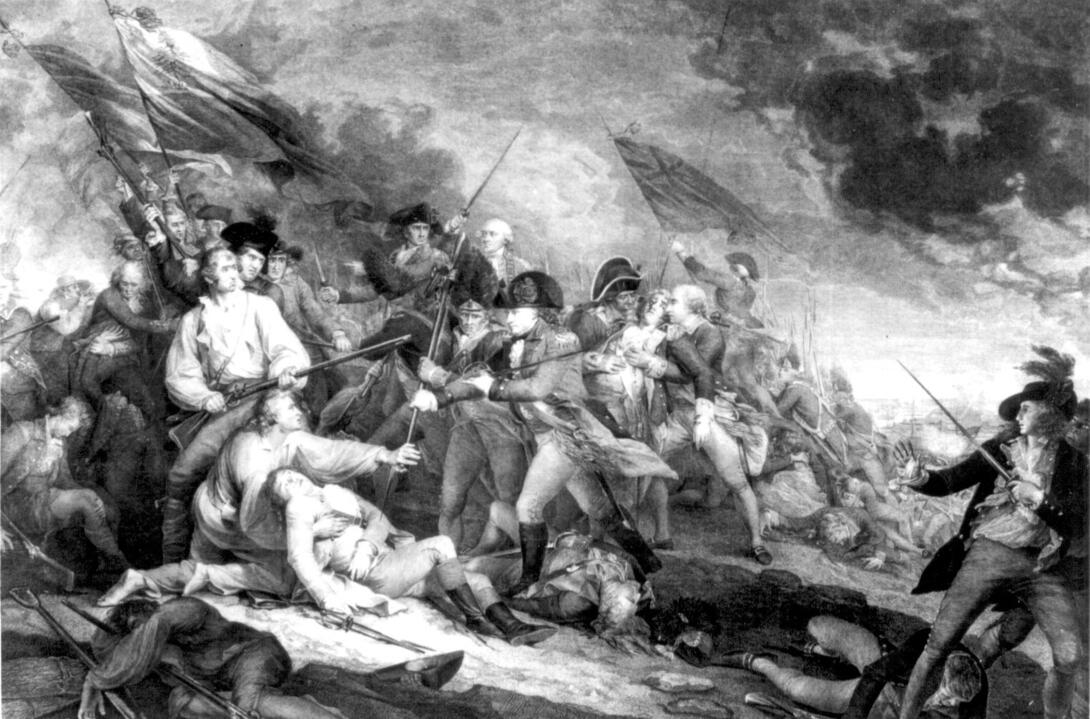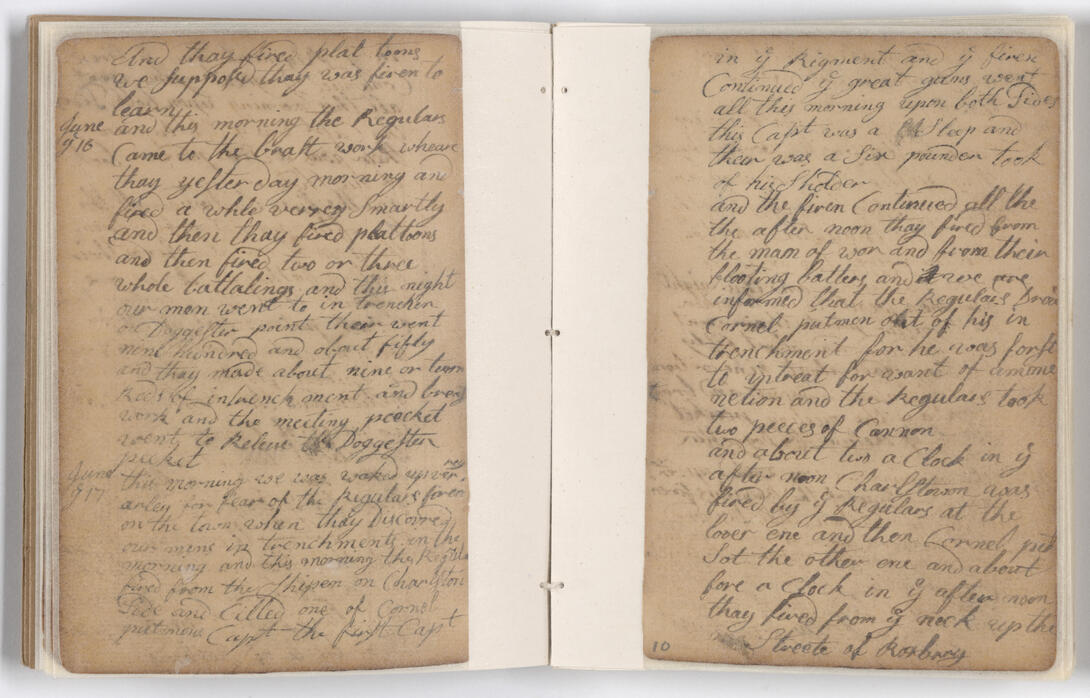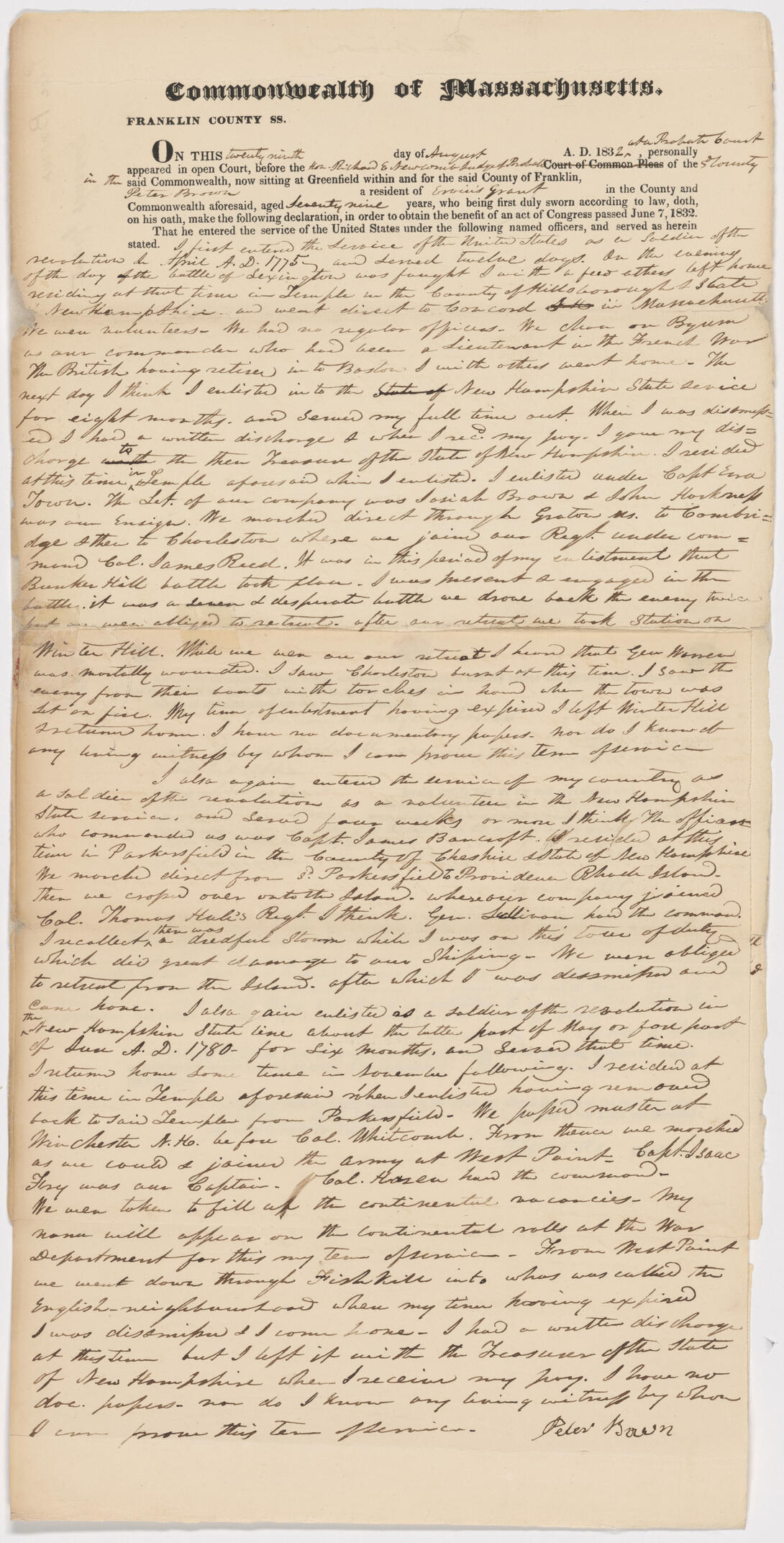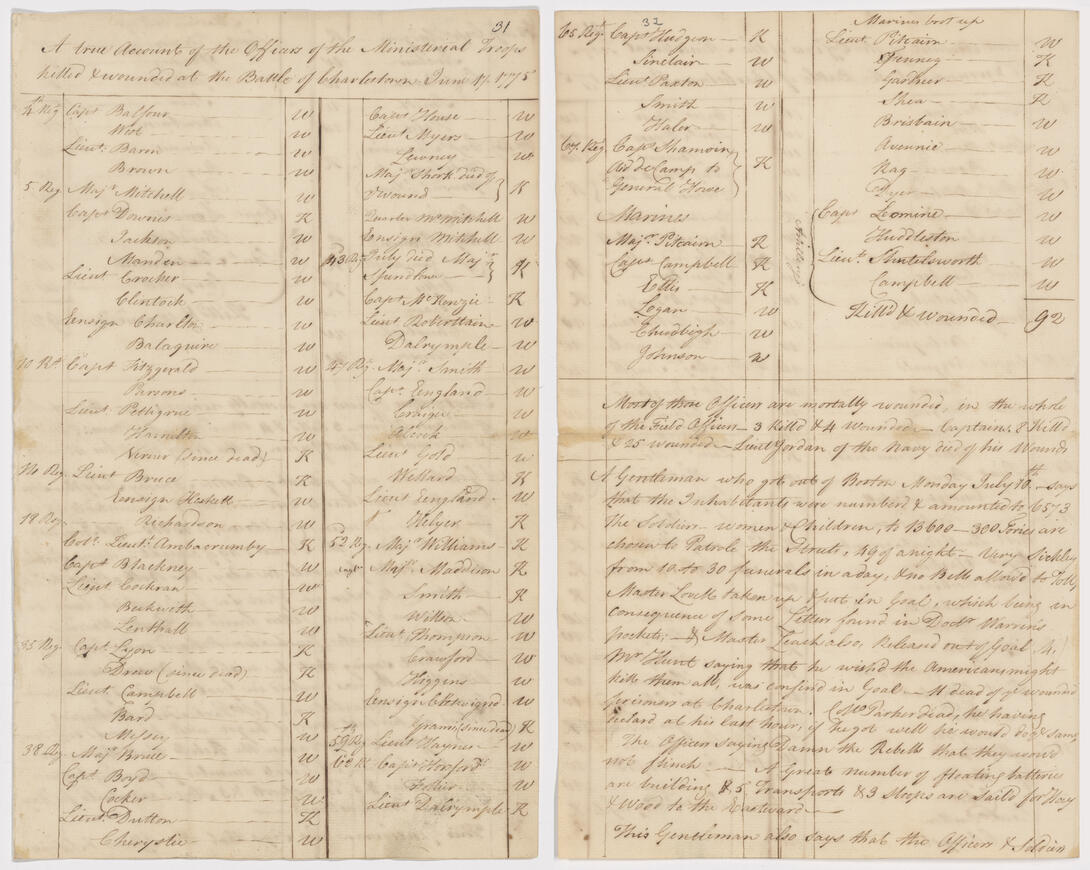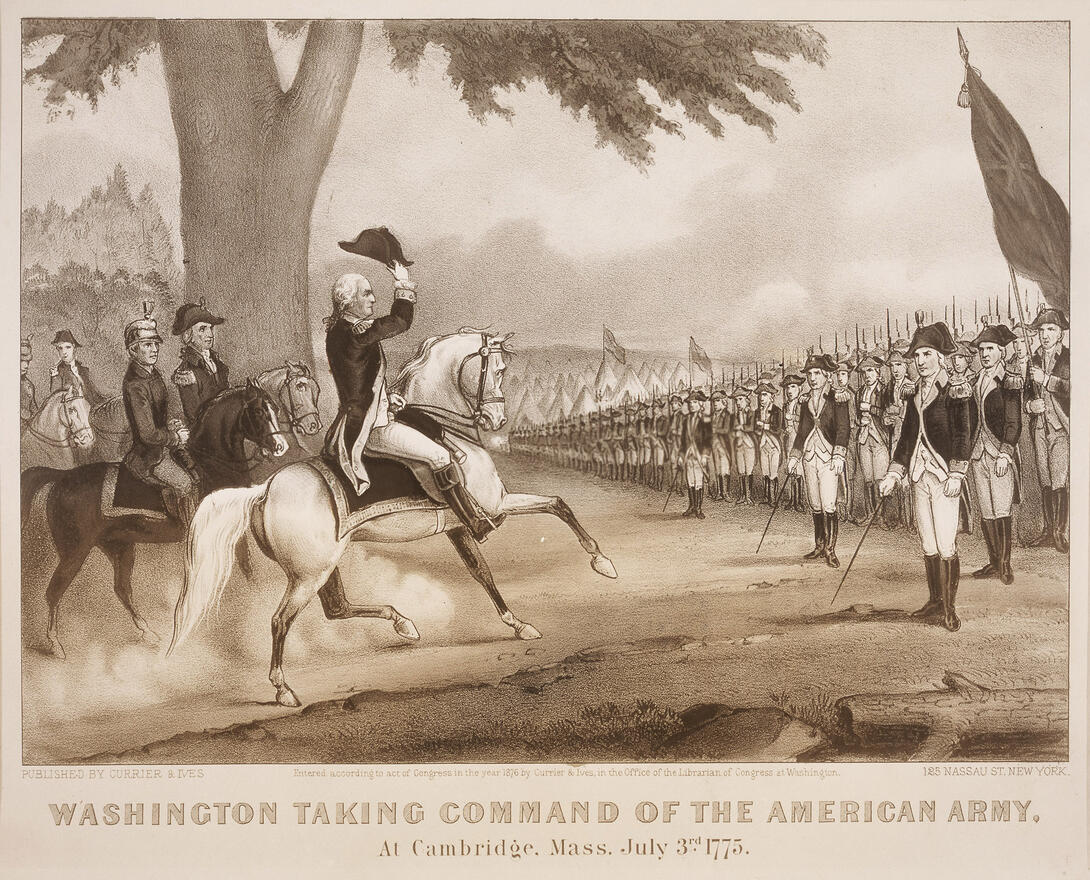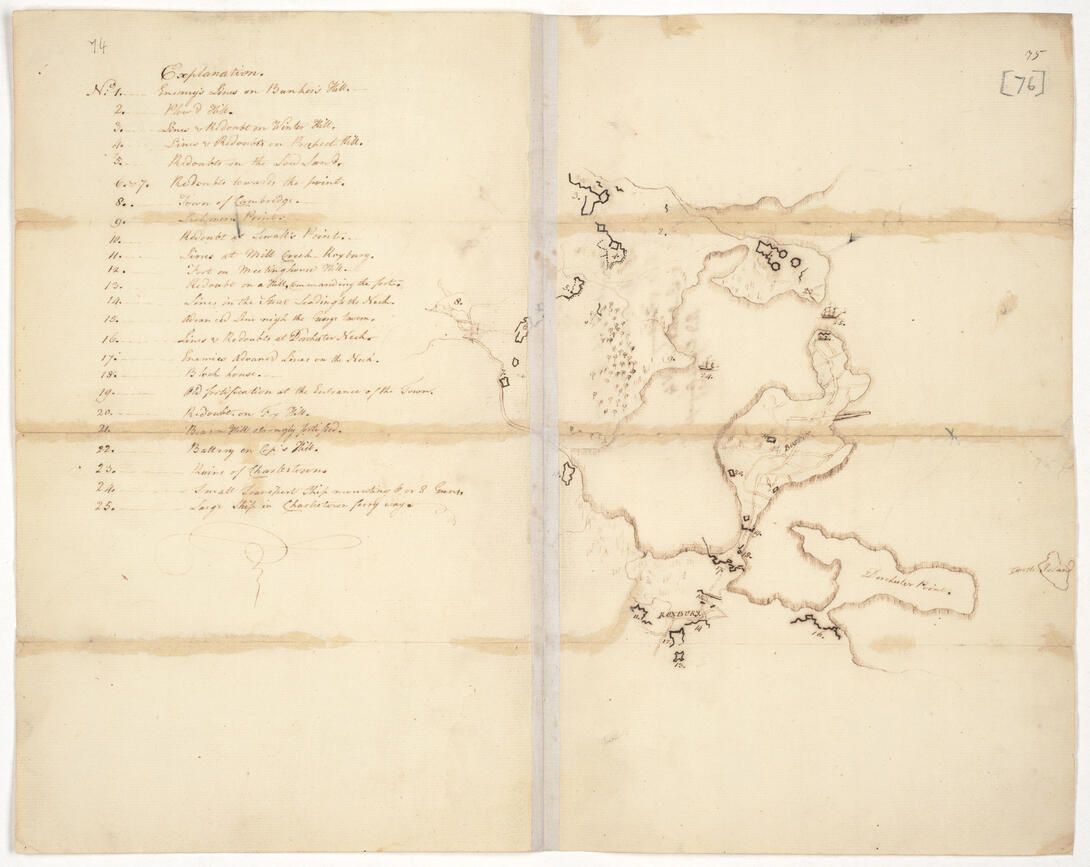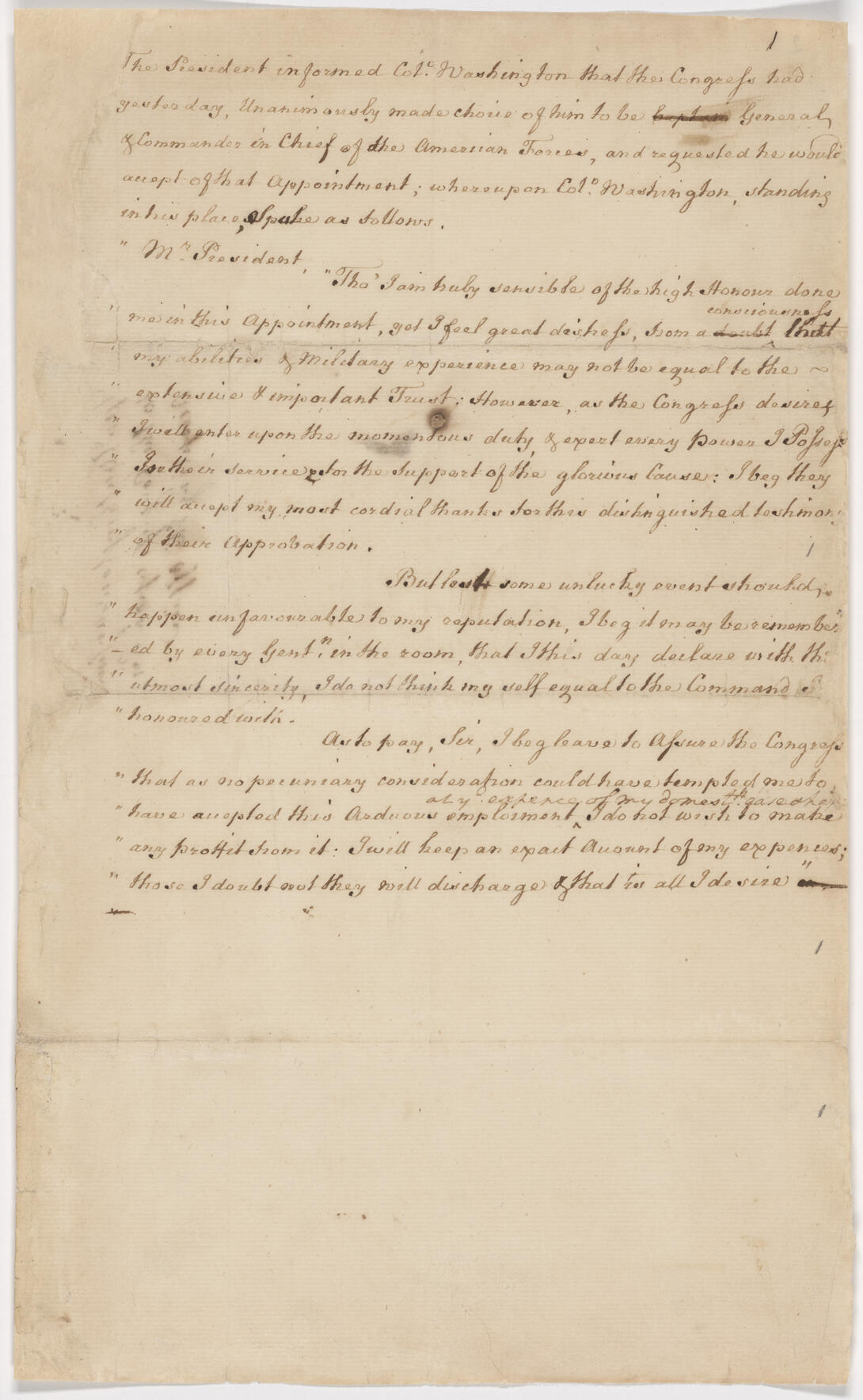Mobilizing for a Revolutionary War
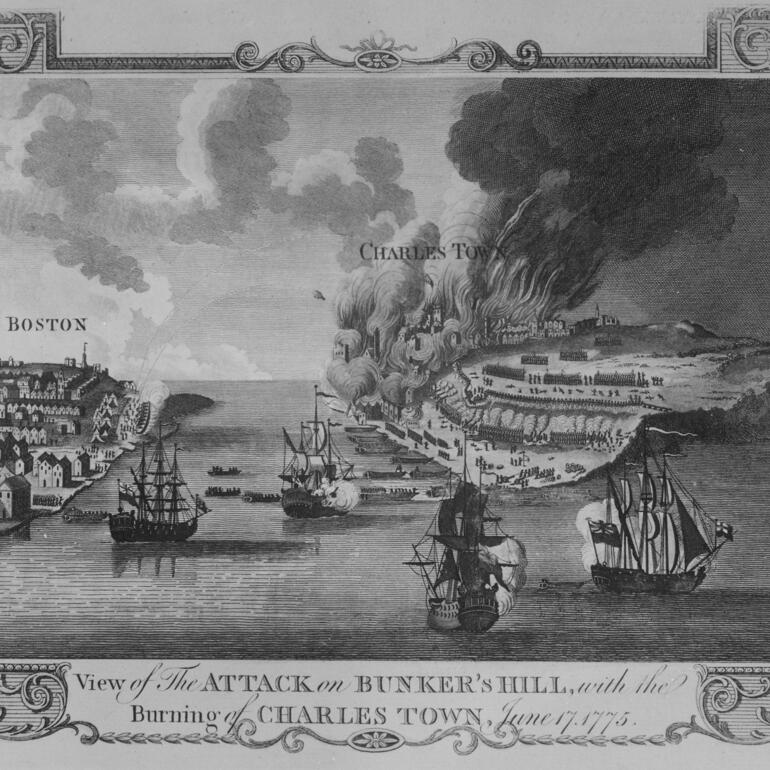
-
As the delegates to the Second Continental Congress met in Philadelphia, Pennsylvania, the second battle of the American Revolutionary War erupted at Bunker Hill, Massachusetts. The Congress had been convened to review British polices, but urgent circumstances led the delegates to establish a Continental Army to defend the colonies against the British military. It would be another year before the Continental Congress formally declared American independence, but to wage war against Great Britain, delegates increasingly acted like leaders of a sovereign nation.
-
Battle of Bunker Hill
History remembers this battle as “Bunker Hill,” but Breed’s Hill saw the action.
Nearly two months after the Battles of Lexington and Concord, British troops in Boston were under siege by the rebel American colonial militia. When the rebels learned of British plans to break out of the city and seize higher ground, colonial forces beat them to it. Originally ordered to fortify Bunker Hill, the militia’s decision to build an entrenchment on neighboring Breed’s Hill triggered a British attack. The British regulars prevailed, but American forces proved their mettle in one of the deadliest battles of the Revolutionary War.
The Battle of Bunker's Hill, Near Boston, June 1775. Records of Commissions of the Legislative Branch
-
In his journal, Jehiel Stewart noted on June 16, “this night our men went to in trenchen on Doggester [Dorchester] point,” across the Charles River from Boston. It remains unknown why the militia fortified Breed’s instead of Bunker Hill on the Charlestown Peninsula. Intent to remain on the defensive, Massachusetts provincial leaders only sought to contain the British, not provoke a fight. When the British awoke to find American fortifications within cannon range, they immediately mobilized for battle.
Journal of Jehiel Stewart, June 16-18, 1775. Records of the Department of Veterans Affairs
-
The British took swift action to dislodge Americans from their fortified entrenchment on June 17. British naval vessels launched an immediate artillery barrage, and British regulars attacked that afternoon. American rebel Peter Brown recounted his experience of the “desperate battle” in his 1832 pension application testimony. He recalled that “we drove back the enemy twice but we were obliged to retreat” after running low on ammunition. British regulars secured Breed’s Hill only after two failed assaults under heavy American musket fire.
Peter Brown’s Revolutionary War pension application, August 29, 1832. Records of the Department of Veterans Affairs
-
The British ultimately took Breed’s Hill, but it came at a steep price. British regulars suffered twice as many casualties—1,054 to the American militia’s approximately 450. This list of British casualties shows that officer losses were especially high. Although the Redcoats prevailed in the two-hour battle, the high casualty count forced many in their ranks to reconsider provincial military capabilities. It also convinced many British officials of the need to launch a full-scale invasion to crush colonial resistance.
Return of British casualties at Bunker Hill, July 11, 1775. Records of the Continental and Confederation Congresses and the Constitutional Convention...Read more
Return of British casualties at Bunker Hill, July 11, 1775. Records of the Continental and Confederation Congresses and the Constitutional Convention
Read less -
Second Continental Congress
Instead of organizing boycotts, delegates mobilized for war.
The Second Continental Congress convened in Philadelphia, on May 10, 1775. A pressing matter for the Congress was what to do about the colonial force besieging the British in Boston. While delegates did not debate the purpose of armed resistance, they agreed that force was necessary. From June 14-15, Congress resolved to establish a Continental Army, selected George Washington as its leader, and ordered recruitment of soldiers. Just days later, the Battle of Bunker Hill erupted.
Photograph of an engraving of Washington Taking Command of the American Army at Cambridge, Massachusetts. Records of Commissions of the...Read more
Photograph of an engraving of Washington Taking Command of the American Army at Cambridge, Massachusetts. Records of Commissions of the Legislative Branch
Read less -
While American militia lost the Battle of Bunker Hill, colonists gained confidence in their ability to withstand the might of the British military. They also didn’t give up after the British gained control of Bunker Hill. Colonial forces continued to keep the British army contained in Boston. When George Washington arrived in Cambridge, Massachusetts, to take command two weeks after the battle, the New England militiamen who remained outside of Boston became the core of the new Continental Army.
Return of the Number of Americans Killed, Wounded, and Missing in the Engagement at Bunker Hill, July 1775. Records of the Continental and Confederati...Read more
Return of the Number of Americans Killed, Wounded, and Missing in the Engagement at Bunker Hill, July 1775. Records of the Continental and Confederation Congresses and the Constitutional Convention
Read less -
American artist John Trumbull observed the Battle of Bunker Hill from a militia encampment at Roxbury, Massachusetts. He used his artistic talents in service of the American cause and produced this sketch map of British and American lines in the Boston area. Location No. 1 shows the British occupation of Bunker Hill after the battle. Trumbull went on to paint some of the most iconic scenes from the American Revolution, including The Death of General Warren at the Battle of Bunker's Hill, June 17, 1775.
Sketch of British and American Lines and Fortifications in Boston Area by John Trumbull, July 1775. Records of the Continental and Confederation Congr...Read more
Sketch of British and American Lines and Fortifications in Boston Area by John Trumbull, July 1775. Records of the Continental and Confederation Congresses and the Constitutional Convention
Read less -
After Congress resolved to establish a Continental Army, it unanimously appointed 43-year-old Virginia delegate George Washington as commander-in-chief on June 15, 1775. In his acceptance speech, Washington thanked Congress and confessed, “I do not think my self equal to the Command.” A veteran of the French and Indian War, General Washington brought more than his military experience to the cause. By placing a Virginian at the head of an army that mostly hailed from New England, Congress ensured its new army was truly “continental.”
Washington's Acceptance of the Post of Commander in Chief, June 16, 1775. Records of the Continental and Confederation Congresses and ...Read more
Washington's Acceptance of the Post of Commander in Chief, June 16, 1775. Records of the Continental and Confederation Congresses and the Constitutional Convention
Read less -
Mobilizing for a Revolutionary War is part five of Road to Revolution, a series of displays highlighting National Archives records that document the journey from colonial resistance to American independence and the diverse experiences of the nation's founding generation.
Road to Revolution is made possible in part by the National Archives Foundation, through the generous support of Comcast Corporation, Microsoft, and Procter & Gamble.








